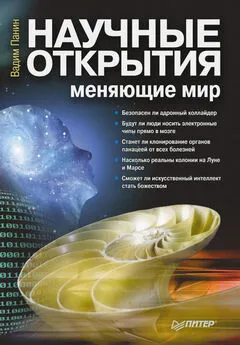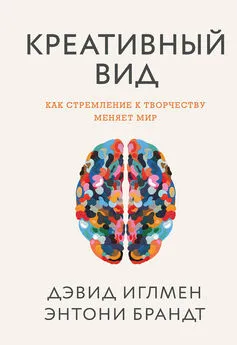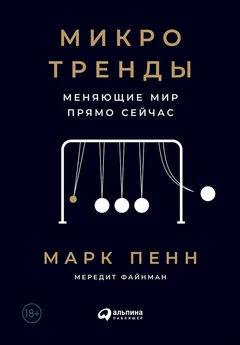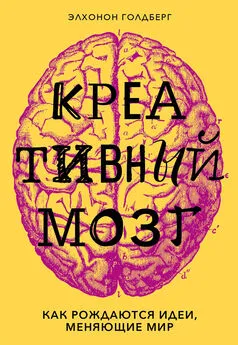Элхонон Голдберг - Креативный мозг [Как рождаются идеи, меняющие мир] [litres]
- Название:Креативный мозг [Как рождаются идеи, меняющие мир] [litres]
- Автор:
- Жанр:
- Издательство:Литагент 5 редакция «БОМБОРА»
- Год:2019
- Город:Москва
- ISBN:978-5-04-105057-3
- Рейтинг:
- Избранное:Добавить в избранное
-
Отзывы:
-
Ваша оценка:
Элхонон Голдберг - Креативный мозг [Как рождаются идеи, меняющие мир] [litres] краткое содержание
Какова природа творчества? Какая работа разума скрывается за его мистикой? Каковы эволюционные корни креативности? В книге нейробиолога и нейропсихолога Элхонона Голдберга эти и другие вопросы рассматриваются как с научной, так с исторической и культурологической точек зрения, превращаясь в масштабное и увлекательное исследование. Опираясь на результаты последних открытий и исследований мозга, а также на собственные идеи и гипотезы, Голдберг приходит к оригинальному, убедительному и даже провокационному пониманию природы творчества и креативности. Читатель совершит удивительное путешествие сквозь эпохи и страны: от античности до далекого будущего, от Западной Европы до Юго-Восточной Азии. Автор делает смелые прогнозы о перспективных направлениях творчества и инноваций, объясняя их биологические и культурные истоки, рассказывает о том, как они сформируют общество будущего и изменят способы развития человеческого мозга.
Креативный мозг [Как рождаются идеи, меняющие мир] [litres] - читать онлайн бесплатно ознакомительный отрывок
Интервал:
Закладка:
19. S. C. Tsoi, U. V. Aiya, K. D. Wasner, M. L. Phan, C. L. Pytte, and D. S. Vicario, «Hemispheric Asymmetry in New Neurons in Adulthood Is Associated with Vocal Learning and Auditory Memory», PLoS One 9 (2014): E108929.
20. L. J. Rogers and G. Vallortigara, «From Antenna to Antenna: Lateral Shift of Olfactory Memory in Honeybees», PLoS One 3 (2008): E2340; E. Frasnelli, «Brain and Behavioral Lateralization in Invertebrates», Frontiers in Psychology 4 (2013): 939.
21. E. Frasnelli, «Brain and Behavioral Lateralization in Invertebrates», Frontiers in Psychology 4 (2013): 939.
22. L. S. Vygotsky, The Psychology of Art (Cambridge, MA: MIT Press, 1974).
23. L. S. Vygotsky, Thought and Language, revised and expanded edn. (Cambridge, MA: MIT Press, 2012); L. S. Vygotsky, Mind in Society: The Development of Higher Cognitive Processes, revised edn. (Cambridge, MA: Harvard University Press, 1978); J. V. Wertsch, Vygotsky and the Social Formation of Mind (Cambridge, MA: Harvard University Press, 1985).
24. F. G. Patterson, «The Gestures of a Gorilla: Language Acquisition in Another Pongid», Brain and Language 5 (1978): 72–97; V. A. Haviland, H. E. L. Prins, B. McBride, and D. Walrath, Cultural Anthropology: The Human Challenge, 15 th. edn. (Wadsworth Publishing, 2016).
25. S. Savage-Rumbaugh and R. Lewin, Kanzi: The Ape at the Brink of the Human Mind (Hoboken, NJ: Wiley, 1994); W. M. Fields, P. Segerdahl, and S. Savage-Rumbaugh, «The Material Practices of Ape Language Research», in The Cambridge Handbook of Sociocultural Psychology, Eds. J. Valsinar and A. Rosa (Cambridge, UK: Cambridge University Press, 2007): 164–186.
26. F. Warneken and A. G. Rosati, «Cognitive Capacities for Cooking in Chimpanzees», Proceedings of the Royal Society B B 282 (2015): 20150229.
27. I. M. Pepperberg, «In Search of King Solomon’s Ring: Cognitive and Communicative Studies of Grey Parrots (Psittacus Erithacus)», Brain, Behavior and Evolution 59 (2002): 54–67; I. M. Pepperberg and S. Carey, «Grey Parrot Number Acquisition: The Inference of Cardinal Value from Ordinal Position on the Numeral List», Cognition 125 (2012): 219–232.
28. K. N. Laland and B. G. Galef, Eds., The Question of Animal Culture (Cambridge, MA: Harvard University Press, 2009).
29. A. Whiten, J. Goodall, W. C. McGrew, T. Nishida, V. Reynolds, Y. Sugiyama, C. E. G. Tutin, R. W. Wrangham, and C. Boesch, «Cultures in Chimpanzees», Nature 399 (1999): 682–685.
30. J. Terkel, «Cultural Transmission of Feeding Behavior in the Black Rat (Rattus Rattus)», in Social Learning in Animals: The Roots of Culture, Eds. C. M. Heyes and B. G. Galef (San Diego, CA: Academic Press, 1996): 17–48.
31. C. A. Toft and T. F. Wright, Parrots of the Wild: A Natural History of the World’s Most Captivating Birds (Berkeley, CA: University of California Press, 2015).
32. C. M. Johnson, «Distributed Primate Cognition: A Review», Animal Cognition 4 (2001): 167–183; W. M. Fields, P. Segerdahl, and S. Savage-Rumbaugh, «The Material Practices of Ape Language Research», in The Cambridge Handbook of Sociocultural Psychology, Eds. J. Valsinar and A. Rosa (Cambridge, UK: Cambridge University Press, 2007): 164–186.
33. E. Pennisi, «The Power of Personality», Science 352 (2016): 644–647.
34. V. A. Haviland, H. E. L. Prins, B. McBride, and D. Walrath, Cultural Anthropology: The Human Challenge, 15th edn. (Belmont, CA: Wadsworth Publishing, 2016).
1. Arrian, The Campaigns of Alexander (New York: Penguin Group, 1971): 105; Plutarch, Life of Alexander (New York: The Modern Library, 2004): 19.
2. B. Hayes, «Gauss’s Day of Reckoning», American Scientist 94 (2006): 200.
3. P. Hermann, M. Smith, and K. L. Alexander, «Horrified Passengers Witnessed Brutal July 4 Slaying Aboard Metro Car», The Washington Post (July 7, 2015): https:// www.washingtonpost.com/ local/ crime/ victim-in-metro-slayingstabbed-repeatedly-during-robbery-on-train/ 2015/ 07/ 07/ 8dd09132—249b-11e5-b72c-2b7d516e1e0e_ story.html.
4. S. E. Asch, «Studies of Independence and Conformity: I. A Minority of One Against a Unanimous Majority», Psychological Monographs: General and Applied 70 (1956): 1—70.
5. S. Gächter and J. Schultz, «Intrinsic Honesty and the Prevalence of Rule Violations Across Societies», Nature 531 (2016): 496–499.
6. A. Strandburg-Peshkin, D. R. Farine, I. D. Couzin, and M. C. Crofoot, «Shared Decision-making Drives Collective Movement in Wild Baboons», Science 348 (2015): 1358–1361.
7. C. S. Carter, T. S. Braver, D. M. Barch, M. M. Botvinick, D. Noll, and J. D. Cohen, «Anterior Cingulate Cortex, Error Detection, and the Online Monitoring of Performance», Science 280 (1998): 747–749.
8. B. Slotnick, «Disturbances of Maternal Behavior in the Rat Following Lesions of the Cingulate Cortex», Behaviour 29 (1967): 204–235.
9. K. A. Hadland, M. F. S. Rushworth, D. Gaffan, and R. E. Passingham, «The Effect of Cingulate Lesions on Social Behaviour and Emotion», Neuropsychologia 41 (2003): 919–931.
10. C. F. Zink and A. Meyer-Lindenberg, «Human Neuroimaging of Oxytocin and Vasopressin in Social Cognition», Hormones and Behavior 61 (2012): 400–409; C. F. Zink, J. L. Stein, L. Kempf, S. Hakimi, and A. Meyer-Lindenberg, «Vasopressin Modulates Medial Prefrontal Cortex-Amygdala Circuitry During Emotion Processing in Humans», Journal of Neuroscience 30 (2010): 7017–7022.
11. V. Klucharev, K. Hytönen, M. Rijpkema, A. Smidts, and G. Fernández, «Reinforcement Learning Signal Predicts Social Conformity», Neuron 61 (2009): 140–151.
12. V. Klucharev, M. A. M. Moniek, A. Smidts, and G. Fernandez, «Downregulation of the Posterior Medial Frontal Cortex Prevents Social Conformity», Journal of Neuroscience 31 (2011): 11934—11940.
13. E. Goldberg, D. Roediger, N. E. Kucukboyaci, C. Carlson, O. Devinsky, R. Kuzniecky, E. Halgren, and T. Thesen, «Hemispheric Asymmetries of Cortical Volume in the Human Brain», Cortex 49 (2013): 200–210.
14. C. Fajardo, M. I. Escobar, E. Buriticá, G. Arteaga, J. Umbarila, M. F. Casanova, and H. Pimienta, «Von Economo Neurons Are Present in the Dorsolateral (Dysgranular) Prefrontal Cortex of Humans», Neuroscience Letters 435 (2008): 215–218.
15. J. M. Allman, N. A. Tetreault, A. Y. Hakeem, K. F. Manaye, K. Semendeferi, J. M. Erwin, S. Park, V. Goubert, and P. R. Hof, «The Von Economo Neurons in the Frontoinsular and Anterior Cingulate Cortex», Annals of the New York Academy of Sciences 1225 (2011): 59–71.
16. A. F. Santillo, C. Nilsson, and E. Englund, «Von Economo Neurones Are Selectively Targeted in Frontotemporal Dementia», Neuropathology and Applied Neurobiology 39 (2013): 572–579.
17. G. Boole, An Investigation of the Laws of Thought (Amherst, MA: Prometheus Books, 2003).
18. J. M. Osborne and A. Rubinstein, A Course in Game Theory (Cambridge, MA: MIT Press, 1994). At the time of this writing, the «2/ 3 of the average» game’s website was http:// twothirdsofaverage.creativitygames.net/.
19. J. P. Guilford, The Nature of Human Intelligence (New York: McGraw-Hill, 1967); E. Jauk, M. Benedek, B. Dunst, and A. C. Neubauer, «The Relationship Between Intelligence and Creativity: New Support for the Threshold Hypothesis by Means of Empirical Breakpoint Detection», Intelligence 41 (2013): 212–221.
20. J. C. Kaufman, Creativity 101 (New York: Springer Publishing Company, 2009).
21. J. B. Carroll, Human Cognitive Abilities: A Survey of Factor Analytic Studies (Cambridge, UK: Cambridge University Press, 1993).
22. E. Goldberg, The New Executive Brain: Frontal Lobes in a Complex World (New York: Oxford University Press, 2009).
23. A. S. Kaufman, IQ Testing 101 (New York: Springer Publishing, 2009).; см. также: http:// www.pearsonclinical.com/ psychology/ products/ 100000392/ wechsleradult-intelligence-scalefourth-edition-wais-iv.html accessed April 24, 2017.
24. R. K. Sawyer, Explaining Creativity: The Science of Human Innovation (New York: Oxford University Press, 2012); M. Csikszentmihalyi, Creativity: Flow and the Psychology of Discovery and Invention (New York: Harper Collins, 1996).
25. T. Hey, Einstein’s Mirror (Cambridge, UK: Cambridge University Press, 1997): 1.
26. K. Landau-Drobantseva, Academician Landau: How We Lived. A Memoir, in Russian (Moscow: Zakharov Press, 1999).
27. R. K. Sawyer, Explaining Creativity: The Science of Human Innovation, 2nd edn. (New York: Oxford University Press, 2012); K. H. Kim, «Meta-analyses of the Relationship of Creative Achievement to Both IQ and Divergent Thinking Tests Scores», Journal of Creative Behavior 42 (2008): 106–130.
28. E. P. Torrance, Torrance Tests of Creative Thinking (Bensenville, IL: Scholastic Testing Service, 1966).
29. D. A. Gansler, D. W. Moore, T. M. Susmaras, M. W. Jerram, J. Sousa, and K. M. Heilman, «Cortical Morphology of Visual Creativity», Neuropsychologia 49 (2011): 2527–2532.
30. R. E. Jung, J. M. Segall, J. H. Bockholt, R. A. Flores, S. W. Smith, R. S. Chavez, and R. J. Haier, «Neuroanatomy of Creativity», Human Brain Mapping 31 (2010): 398–409.
31. H. Takeuchi, Y. Taki, Y. Sassa, H. Hashizume, A. Sekiguchi, A. Fukushima, and R. Kawshima, «Regional Gray Matter Volume of Dopaminergic System Associate with Creativity: Evidence from Voxel-based Morphometry», Neuroimage 51 (2010): 578–585; H. Takeuchi, Y. Taki, Y. Sassa, H. Hashizume, A. Sekiguchi, A. Fukushima, and R. Kawishima, «White Matter Structures Associated with Creativity: Evidence from Diffusion Tensor Imaging», Neuroimage 51 (2010): 11–18.
32. S. Sandkühler and J. Bhattacharya, «Deconstructing Insight: EEG Correlates of Insightful Problem Solving», PLoS One 3 (2008): E1459.
33. A. Fink, R. H. Grabner, M. Benedek, G. Reishofer, V. Hauswirth, M. Fally, C. Neuper, F. Ebner, and A. C. Neubauer, «The Creative Brain: Investigation of Brain Activity During Creative Problem Solving by Means of EEG and FMRI», Human Brain Mapping 30 (2009): 734–748.
34. I. Carlsson, P. E. Wendt, and J. Risberg, «On the Neurobiology of Creativity: Differences in Frontal Activity Between High and Low Creative Subjects», Neuropsychologia 38 (2000): 873–875.
35. A. Fink and M. Benedek, «EEG Alpha Power and Creative Ideation», Neuroscience and Biobehavioral Reviews 44 (2014): 111–123.
36. C. Lustenberger, M. R. Boyle, A. A. Foulser, J. M. Mellin, and F. Fröhlich, «Functional Role of Frontal Alpha Oscillations in Creativity», Cortex 67 (2015): 74–82.
37. A. E. Green, K. A. Spiegel, E. J. Giangrande, A. B. Weinberger, N. M. Gallagher, and P. E. Turkeltaub, «Thinking Cap Plus Thinking Zap: TDCS of Frontopolar Cortex Improves Creative Analogical Reasoning and Facilitates Conscious Augmentation of State Creativity in Verb Generation», Cerebral Cortex (2016): Bhw080.
38. C. Lombroso, The Man of Genius, reprint of translated edition of the original 1889 book (North Charleston, SC: CreateSpace Independent Publishing Platform, 2015).
39. S. H. Carson, «Creativity and Psychopathology: A Shared Vulnerability Model», Canadian Journal of Psychiatry 56 2011: 144–153; A. Fink, M. Benedek, H. F. Unterrainer, I. Papousek, and E. M. Weiss, «Creativity and Psychopathology: Are There Similar Mental Processes Involved in Creativity and in Psychosisproneness?» Frontiers in Psychology 5 (2014).
40. Более подробный обзор можно найти в моей предыдущей книге: E. Goldberg, The Wisdom Paradox: How Your Mind Can Grow Stronger As Your Brain Grows Older (New York: Gotham, 2005).
41. S. H. Carson, J. B. Peterson, and D. M. Higgins, «Reliability, Validity, and Factor Structure of the Creative Achievement Questionnaire», Creative Research Journal 17 (2005): 37–50; H. G. Gough, «A Creative Personality Scale for the Adjective Check List», Journal of Personality and Social Psychology 37 (1979): 1398–1405.
Читать дальшеИнтервал:
Закладка:
![Обложка книги Элхонон Голдберг - Креативный мозг [Как рождаются идеи, меняющие мир] [litres]](/books/1065923/elhonon-goldberg-kreativnyj-mozg-kak-rozhdayutsya-id.webp)









